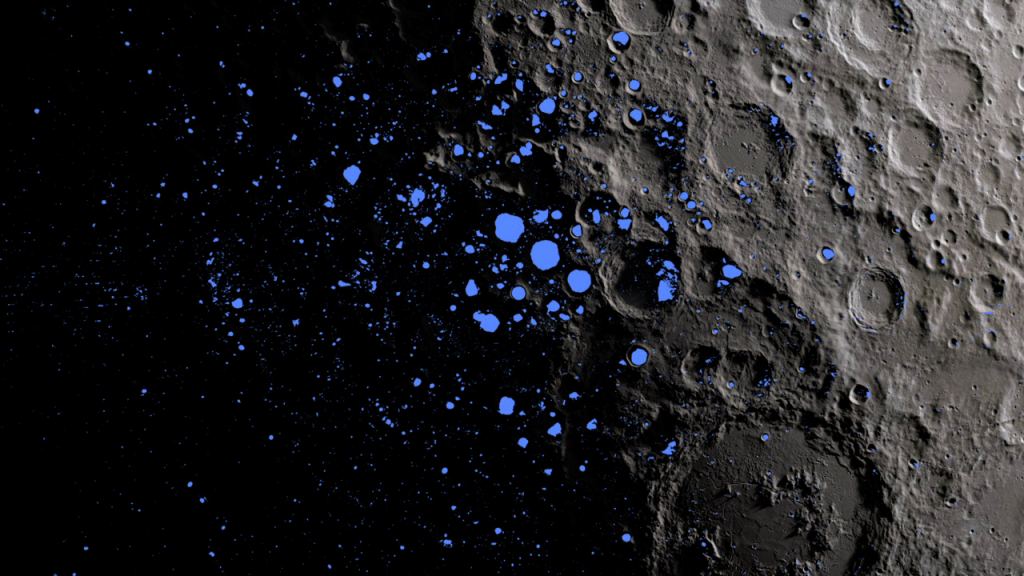In the coming years, China and Roscosmos plan to create the International Lunar Research PStation (ILRSP), a permanent base in the Moon's southern polar region. Construction of the base will begin with the delivery of the first surface elements by 2030 and is expected to last until about 2040. This base will rival NASA's Artemis Program, which will include the creation of the Lunar Gateway in orbit around the Moon and the various surface elements that make up the Artemis Base Camp. In addition to the cost of building these facilities, there are many considerable challenges that need to be addressed first.
Crews operating on the lunar surface for extended periods will require regular shipments of supplies. Unlike the International Space Station, which can be resupplied in a matter of hours, sending resupply spacecraft to the Moon will take about three days. As a result, NASA, China, and other space agencies are developing methods to harvest resources directly from the lunar environment - a process known as In-Situ Resource Utilization (ISRU). In a recent paper, a research team with the Chinese Academy of Sciences (CAS) announced a new method for producing massive amounts of water through a reaction between lunar regolith and endogenous hydrogen.
The research was conducted by Prof. Wang Junqiang and his team at the CAS Ningbo Institute of Materials Technology and Engineering 's (NIMTE) Key Laboratory of Magnetic Materials and Devices. They were joined by colleagues from the Center of Materials Science and Optoelectronics Engineering at the University of Chinese Academy of Sciences in Beijing. The paper that describes their process, " Massive Water Production from Lunar Ilmenite through Reaction with Endogenous Hydrogen," recently appeared in the Chinese journal The Innovation.
Ever since the Apollo missions brought samples of lunar rocks and soil back to Earth for analysis, scientists have known that there is abundant water on the Moon. These findings were confirmed by several subsequent robotic sample-return missions, including China's Chang'e-5 mission. However, much of this water consists of hydroxyl (OH) created through the interaction of solar wind (ionized hydrogen) and elemental oxygen in the regolith. There is also plenty of water in the form of ice that can be found in permanent shadowed regions (PSRs), such as the craters that cover the South Pole-Aitken Basin.
Unfortunately, lunar regolith contains very little hydroxyl that can be converted into water, ranging from 0.0001% to 0.02%. Moreover, the icy patches found in cratered regions are mixed with regolith, forming layers that extend beneath the surface. As such, extraction is a challenge regardless of where the water is coming from. After they examined the samples returned by the Chang'e-5 mission, the team led by Wang determined that the highest concentrations of water were contained in ilmenite (FeTiO3), a titanium-iron oxide mineral found in lunar regolith.
According to the research team, this is due to "its unique lattice structure with sub-nanometer tunnels." The team then conducted a series of in-situ heating experiments that revealed how hydrogen in lunar minerals could be used to produce water on the Moon. According to their study, the process consists of heating lunar regolith to temperatures exceeding 1,200 K (~930° C; 1700° F) with concave mirrors. This led to the formation of iron crystals and water bubbles in the material, the latter being released as water vapor. The chemical process is expressed mathematically as:
FeO/Fe2O3 + H --> Fe + H2O.
The resulting water vapor is then reclaimed at a rate of 51-76 mg of water for every gram of lunar soil. That works out to 50 liters (13.2 gallons) of water for every ton of processed regolith, enough to sustain 50 people daily. As the team noted in their paper, "[t]his amount is ~10,000 times the naturally occurring hydroxyl (OH) and H2O on the Moon." In addition to drinking water, this process could provide the necessary irrigation water for growing crops, another important task for future lunar settlements to lessen their dependence on Earth.
This same process could be used to chemically separate hydrogen and oxygen gas from regolith, which could then be fashioned into propellant - liquid hydrogen (LH2) and liquid oxygen (LOX) - or used as fuel and for maintaining supplies of breathable oxygen. "Our findings suggest that the hydrogen retained in [lunar regolith] is a significant resource for obtaining H2O on the Moon, which is helpful for establishing scientific research stations on the Moon," they conclude.
Another benefit is that the process is driven almost entirely by focused sunlight, while solar arrays can provide the additional power that drives the retention process. The one limiting factor is that this process will only be possible during a lunar day in the southern polar region (where China, NASA, and the ESA plan to build their bases). This means that the facility could run for two weeks straight, followed by a two-week lull.
However, this can be mitigated by stationing processing facilities away from the polar regions or possibly creating a network of solar mirrors or satellites that can direct light toward the southern polar region. In any case, this method presents a potential means of harvesting water on the Moon that is cost-effective compared to heating regolith in industrial furnaces and could be paired with ice extraction and processing to ensure future settlements have plenty of water.
Further Reading: NIMTE*, The Innovation*
 Universe Today
Universe Today

